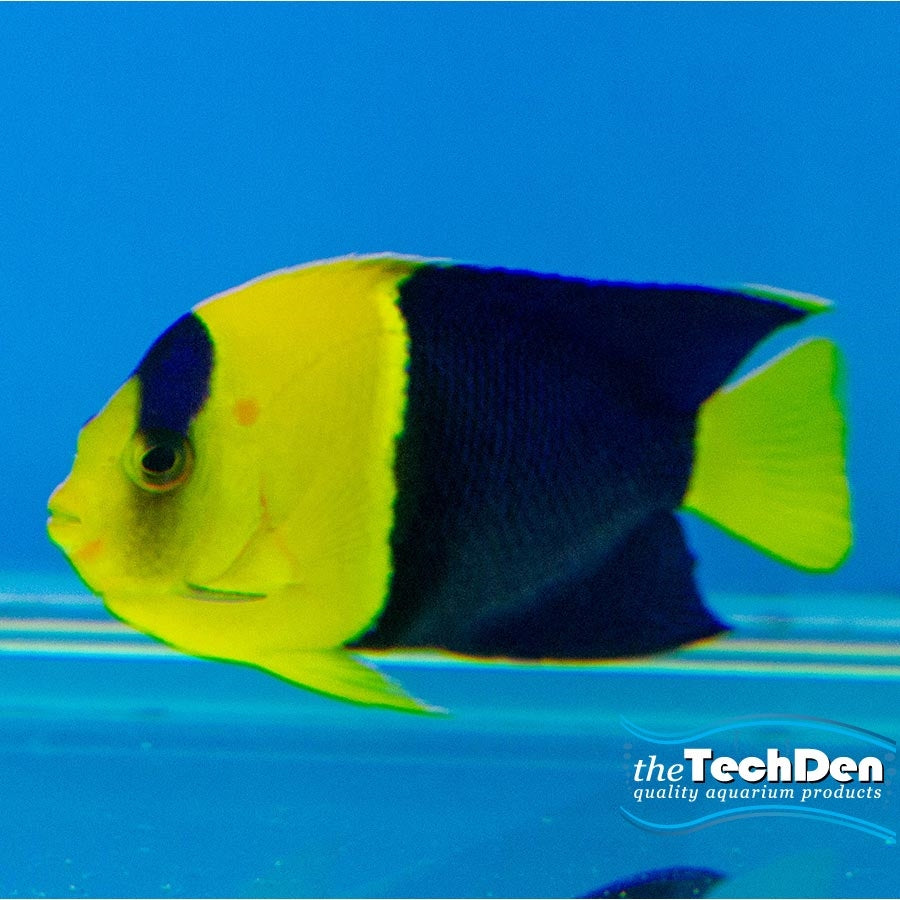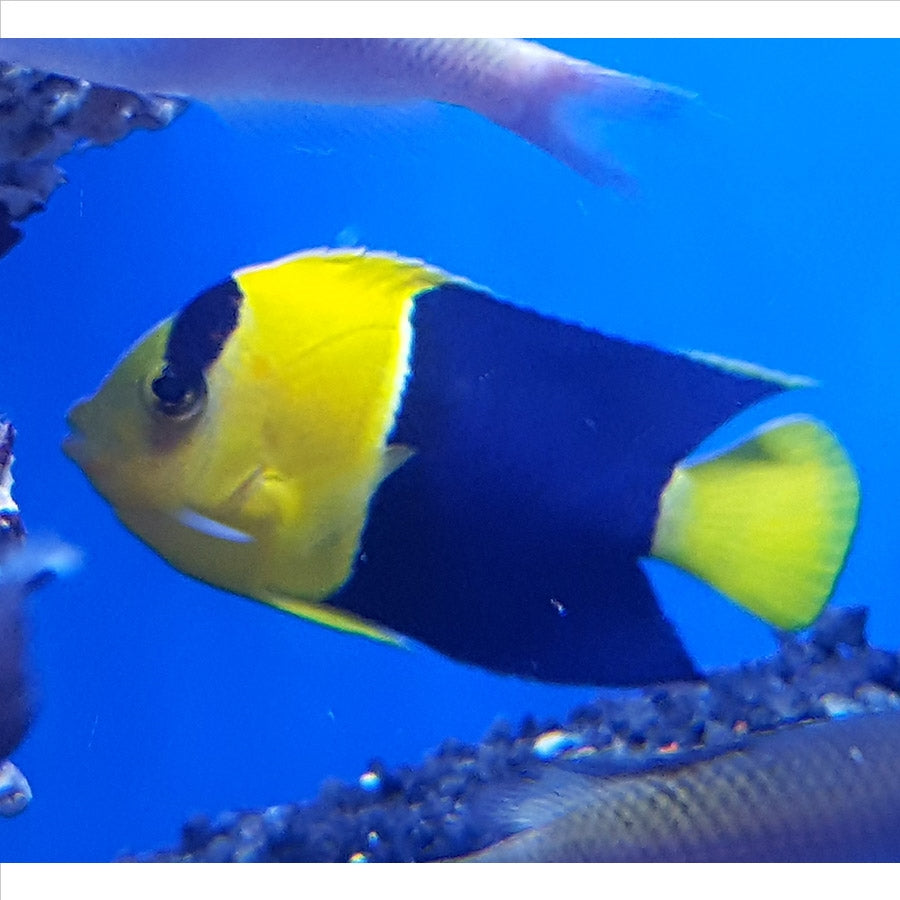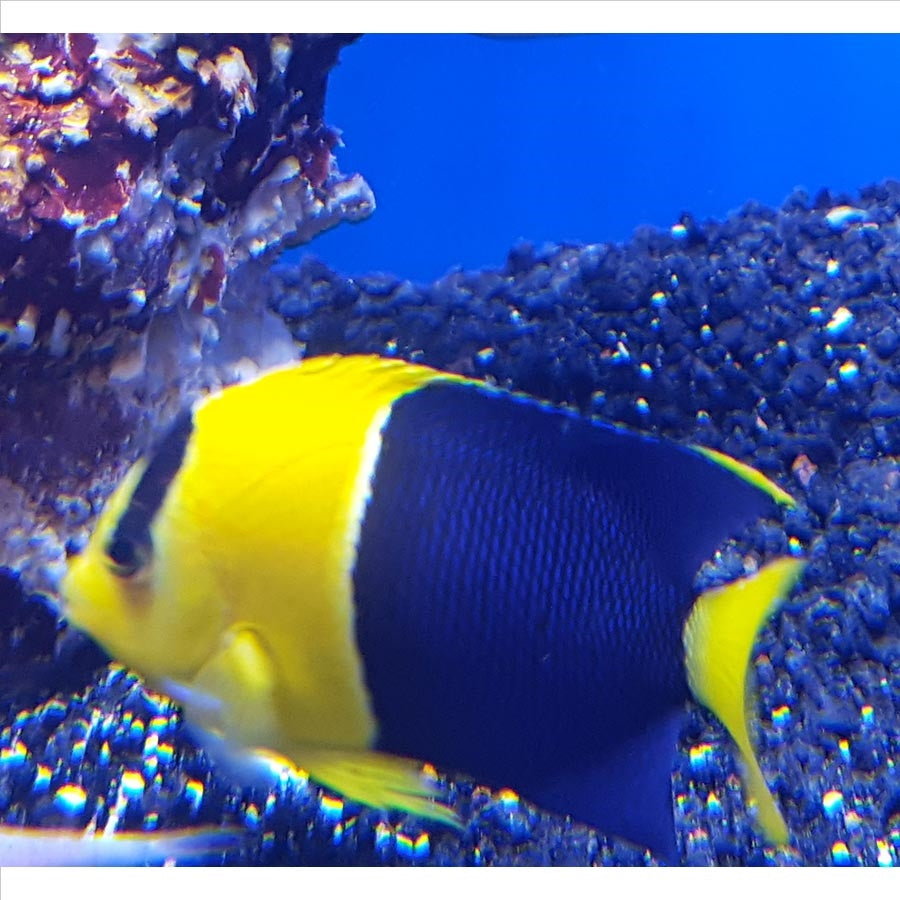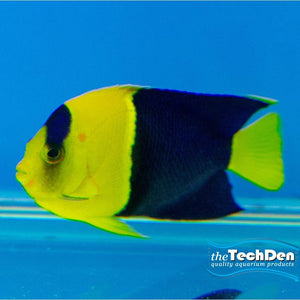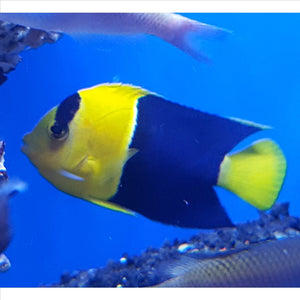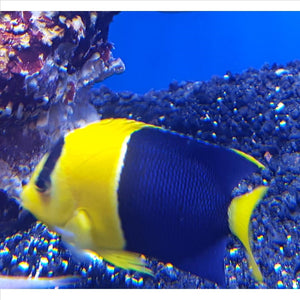The Bicolour Angelfish (Centropyge bicolor) is a striking fish with a vibrant yellow front half and a deep blue rear, separated by a sharp line. It's a popular choice for experienced saltwater aquarium keepers. Here's a care guide tailored for your location in Caboolture, Queensland, Australia:
Care Level: Moderate to Difficult. They can be sensitive and require specific conditions.
Size: They can reach up to 6 inches (15 cm) in length.
Tank Size: A minimum tank size of 75 gallons (approximately 284 liters) is highly recommended for a single Bicolour Angelfish. Larger tanks are better to provide ample swimming space and territories.
Water Parameters:
-
Temperature: 72-78°F (22-26°C). Consistent temperatures are crucial. You'll likely need a heater during cooler months in Queensland and monitor closely during hot summer months to prevent overheating.
-
Salinity: 1.020-1.025 specific gravity. Use a refractometer for accurate readings.
-
pH: 8.1-8.4
-
Alkalinity: 8-12 dKH
-
Nitrate: Below 20 ppm
-
Phosphate: Below 0.1 ppm
- Maintain stable water parameters through regular testing and significant weekly water changes using high-quality saltwater mix and RODI (reverse osmosis deionized) water. Tap water in Queensland can be harmful to marine life.
Temperament and Tank Mates:
-
Semi-aggressive: Bicolour Angelfish can be territorial, especially towards other dwarf angelfish and similar-shaped or colored fish.
-
Best kept singly unless in a very large tank (150+ gallons) with established territories, and introduced simultaneously as juveniles.
-
Reef Safe with Caution: They are known to nip at various corals (soft, stony, and LPS), as well as clams and other sessile invertebrates. They are best kept in fish-only with live rock (FOWLR) tanks or with less sensitive corals.
-
Suitable Tank Mates:
- Larger, more robust fish that won't be intimidated.
- Tangs
- Large Wrasses
- Damselfish (some species)
- Larger Lionfish
-
Avoid:
- Other dwarf angelfish (unless in a very large tank).
- Peaceful, slow-swimming fish (may be harassed).
- Small invertebrates if you want to keep a reef tank.
Diet:
-
Omnivorous: Their natural diet includes small crustaceans, algae, sponges, worms, and sometimes corals.
- In the aquarium, provide a varied diet rich in vegetable matter:
- High-quality marine flake or pellet food containing spirulina and marine algae.
- Frozen foods containing algae, mysis shrimp, and brine shrimp (vitamin-enriched).
- Offer fresh or dried seaweed (nori) regularly.
- A well-established tank with plenty of live rock for grazing is beneficial.
- Some may accept finely chopped meaty foods.
- Feed 2-3 times daily.
Aquarium Setup:
-
Ample Live Rock: Essential for providing grazing opportunities, hiding places, and establishing territories. Arrange rockwork to create caves and crevices.
-
Open Swimming Space: While they appreciate hiding spots, they also need open areas to swim.
-
Established Tank: They do best in well-established aquariums (at least 6 months old) with stable parameters and natural algae growth.
-
Substrate: A substrate is not critical but can provide foraging opportunities.
Important Considerations for Caboolture, Queensland:
-
Temperature Stability: Monitor and maintain stable water temperatures year-round.
-
Water Quality: Use only RODI water for mixing saltwater and top-offs.
-
Acclimation: Acclimate them slowly and carefully to your tank's parameters.
-
Quarantine: A quarantine tank is highly recommended to monitor their health and feeding before introducing them to the main display.
-
Observation: Closely observe their feeding habits, as they can sometimes be finicky eaters, especially when first introduced.
Keeping a Bicolour Angelfish can be rewarding due to its stunning appearance, but it requires careful planning regarding tank mates and a commitment to maintaining excellent water quality and a varied diet. Their potential for nipping corals makes them a "reef-safe with caution" species at best.
![Eco Tech Advanced Reptile Thermostat - Dimming - Dual Electronic Thermostat.]()



